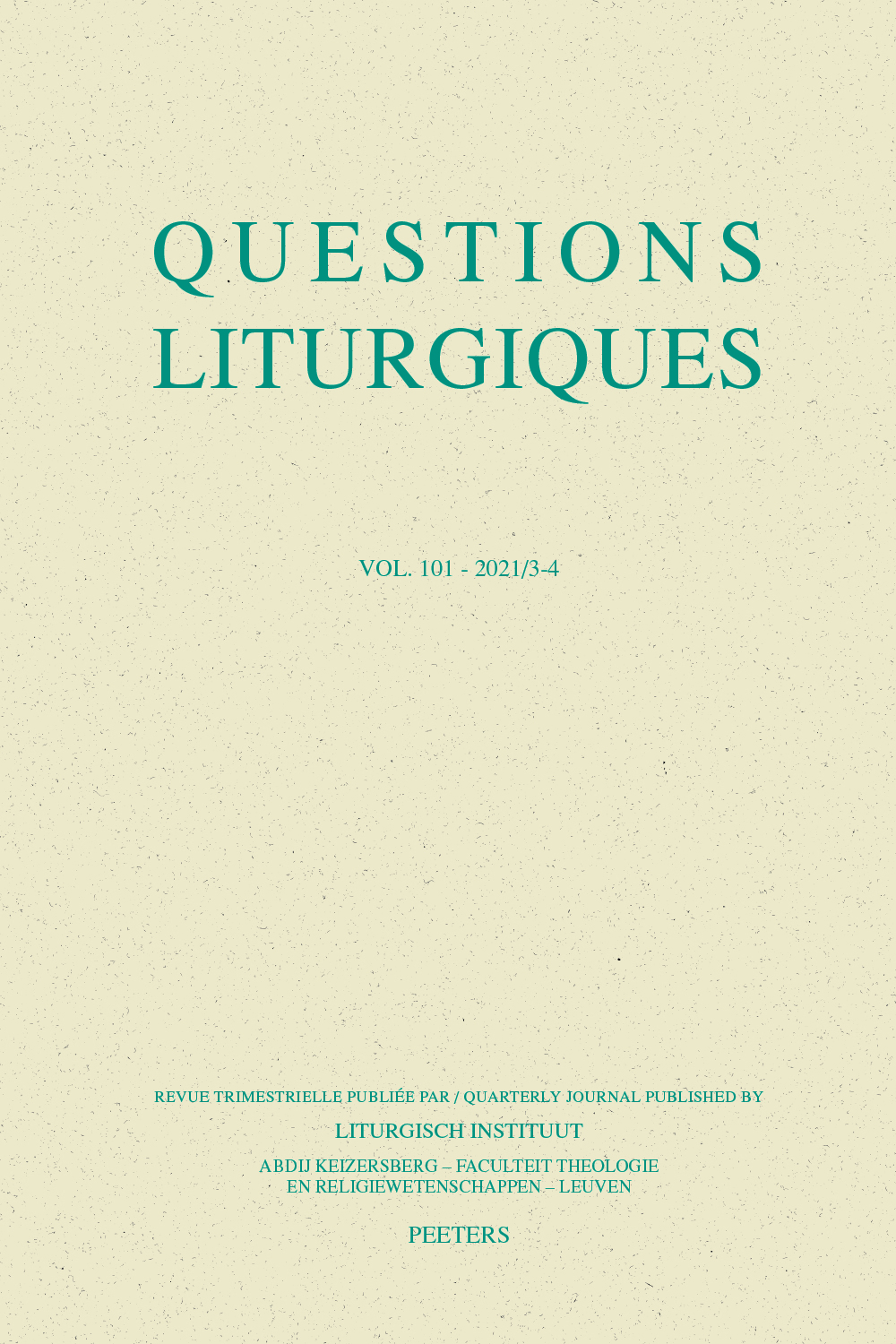 previous article in this issue previous article in this issue | next article in this issue  |

Preview first page |
Document Details : Title: 'For Boldness Before You' Subtitle: Spiritual Visions of Eucharistic Praying in Byzantine and Roman Tradition Author(s): TURPIN, Alexander Journal: Questions Liturgiques/Studies in Liturgy Volume: 102 Issue: 3-4 Date: 2022 Pages: 191-220 DOI: 10.2143/QL.102.3.3291360 Abstract : The anaphora – or 'eucharistic prayer' – is a liturgical prayer of stunning boldness. The Church’s entire justification for this boldness rides on Christ’s command at the last supper: 'Do this in remembrance of me' (1 Cor 11:24). In fact, it has become commonplace among scholars to classify anaphoral traditions based upon how they situate the institution: within a discourse of supplication or 'epiclesis', or within a narrative of remembrance or 'anamnesis'. The distinctive way an anaphora realizes the institution is what gives texture and definition to the spiritual vision it offers to the Church. Its 'style' also reflects the cultural and theological atmosphere in which it developed. Every anaphora thus has the potential to shape the Church that prays it in its own unique vision of thankful trust in God. In this study, I will attempt a comparative exegesis of two ancient anaphorae from the Byzantine and Roman liturgical traditions. On the basis of that exegesis and in light of how each anaphora situates the institution account, I will attempt to articulate the particular spiritual vision each offers to the Church – and how an increased attention to each of these visions might enrich or even subvert some of the Church’s accepted ideas about herself and God. L’anaphore – ou «prière eucharistique» – est une prière liturgique d’une audace stupéfiante. Toute la justification de cette audace par l’Église repose sur le commandement du Christ lors du dernier repas: «Faites ceci en mémoire de moi» (1 Co 11,24). En fait, il est devenu courant pour les spécialistes de classer les traditions anaphoriques en fonction de la manière dont elles situent l’institution: dans un discours de supplication ou «épiclèse», ou dans un récit de souvenir ou «anamnèse». La façon distinctive dont une anaphore réalise l’institution est ce qui donne une texture et une définition à la vision spirituelle qu’elle offre à l’Église. Son «style» reflète également l’atmosphère culturelle et théologique dans laquelle elle s’est développée. Chaque anaphore a donc le potentiel de façonner l’Église qui la prie dans sa vision unique de la confiance reconnaissante en Dieu. Dans cette étude, je vais tenter une exégèse comparative de deux anaphores anciennes issues des traditions liturgiques byzantine et romaine. Sur la base de cette exégèse et à la lumière de la manière dont chaque anaphore situe le récit de l’institution, j’essaierai d’articuler la vision spirituelle particulière que chacune offre à l’Église – et comment une attention accrue à chacune de ces visions pourrait enrichir ou même subvertir certaines des idées acceptées de l’Église sur elle-même et sur Dieu. |
|


